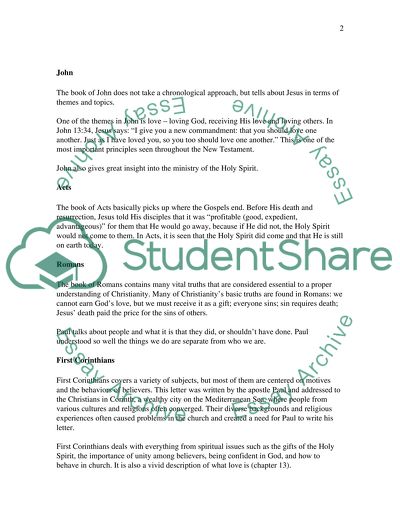Summary of the books of the Bible Part II (New Testament Books) Essay. Retrieved from https://studentshare.org/miscellaneous/1541248-summary-of-the-books-of-the-bible-part-ii-new-testament-books-matthew-to-revelation
Summary of the Books of the Bible Part II (New Testament Books) Essay. https://studentshare.org/miscellaneous/1541248-summary-of-the-books-of-the-bible-part-ii-new-testament-books-matthew-to-revelation.


